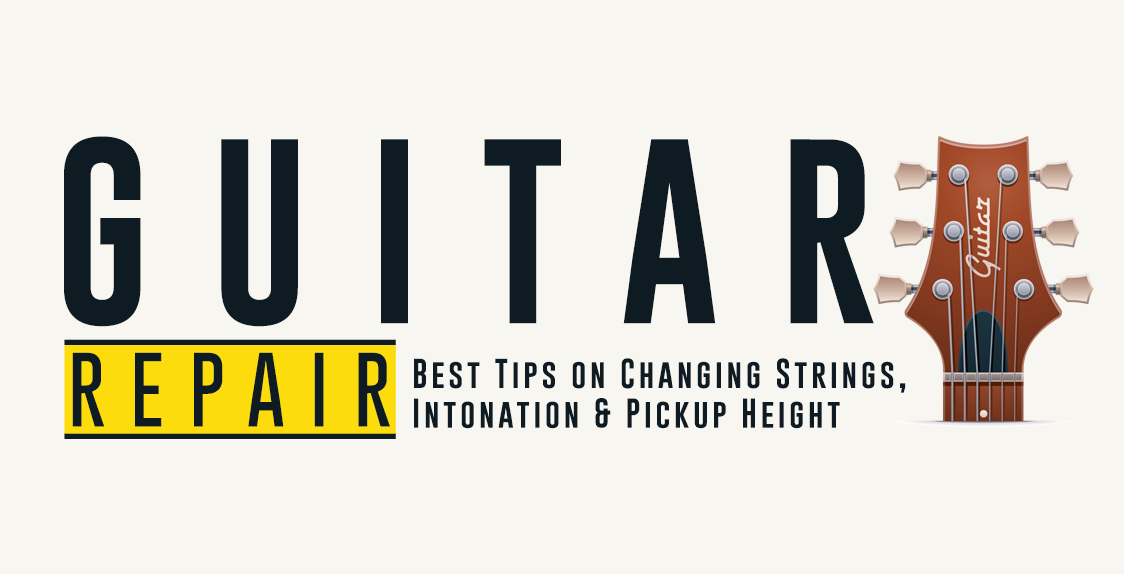FREE LESSON
PHIL KEAGGY - Grammy nominated and seven-time Dove Award winner, is one of the world’s great guitar players and a pioneer in contemporary Christian music.

Who’s the best guitar technician out there? Well, sometimes it’s you. There will always be guitar repair that require a professional guitar tech or luthier.
For instance, a snapped neck or fret work guitar repair will require a lot of specialty tools and decades worth of know-how. However, there are many things you can do on your own to keep your guitar playing and sounding its best.
In this series of videos, you can learn to do all of the things that the pros do to keep their guitars in ship shape. Once you know the basics it can help you to identify bigger problems, because, let’s face it--sometimes we all need a little professional help. So silence those voices in your head screaming, “Don't touch it! You'll break it!" and get prepared to become super handy with a hex wrench.
Let’s wade in at the shallow end of the repair pool. Over time, strings get dull, they break, and worst of all they smell like old nickels.
The first and most important field repair that you need to learn is a string change. If you're playing a lot, it's best to change your strings around once a month. Here’s a great tutorial with plenty of Pro Tips for changing strings on a Stop tailpiece style electric guitar:
If you’ve got a different style of bridge than the one shown, say a Fender or Floyd Rose, you can go to the manufacturer's website for details on how to string your specific bridge. Here’s a video for a Fender style guitar:
If you want to change the strings on your acoustic guitar, watch below.
Changing the strings on a nylon string acoustic can be a little more involved. Here’s a great tutorial for all of you classical and Flamenco players. CLICK HERE
Now that you’ve got that fresh set of strings on, it’s time to talk about intonation. In short, just because you tune your open strings doesn’t necessarily mean that your guitar is in tune at every fret. In fact, most guitars need to be adjusted several times a year to keep them ringing true. Who better to show you how to get your guitar sounding it’s best than Toby Friesen? This is a great video which shows you how pros keep their guitars perfectly in tune all the way up the fretboard.
Adjusting the intonation on your guitar is usually part of a larger process known as a "set up". A set up also includes adjusting the string height, and the truss rod (when necessary).
A word of caution: unless you are experienced, do not adjust the truss rod yourself because if you're not careful, you can ruin the neck. When it's time for a truss rod adjustment, it's a good idea to take it to your local music store and let the in-house guitar guru have a look at it.
On the other hand, string height (also called “action") can be an easy adjustment. If you feel like your strings are too high and hard to push down, or if they’re resting on the frets and causing annoying buzzes, adjusting the string height at the bridge or nut is usually the way to fix it. Here’s everything you need to know to set up your guitar: WATCH HERE
This tutorial will help you not only see how to adjust your string height, but also give you some insight as to how the truss rod will factor into string height.
Even though the truss rod adjustment is one instance where you should listen to the voices in your head (really, don’t touch it!), don't let that scare you away from the simple and important task of properly maintaining your intonation on your guitar and getting your strings at the optimal height. In most cases, this will completely revolutionize the way your guitar plays.

Another thing you can do to get your electric guitar sounding its best is to get the pickups at their optimal height. This is a super easy fix that every guitarist should do to get the most out of their pickups. Watch as DJ cox shows you how a simple phillips head screw driver can improve your tone. Complete with pro tips and colorful analogies, this fun little tutorial is a great place to dive in if you want to become your own favorite guitar tech.
Now that you know the basics of routine repairs and set ups for your guitar, start branching out. Get good with a soldering iron and you can really get into some fun territory. Swapping out pickups or replacing all of the cheap electronics that come on low end guitars can transform a mediocre sounding instrument into a tone machine.
These kinds of upgrades are usually fun and cost effective, but most importantly, learning how to do them allows you to customize the tone and feel of your instrument. For a list of the best stores to purchase everything you need to do all the upgrades and repairs on your own guitar, read here.
No matter how good you get your guitar sounding, you still need to know the proper way to play it. Should you be interested in one of the pros, featured in the links above, showing you how to play the guitar, click on the link below and get started. You’ll be glad you did.